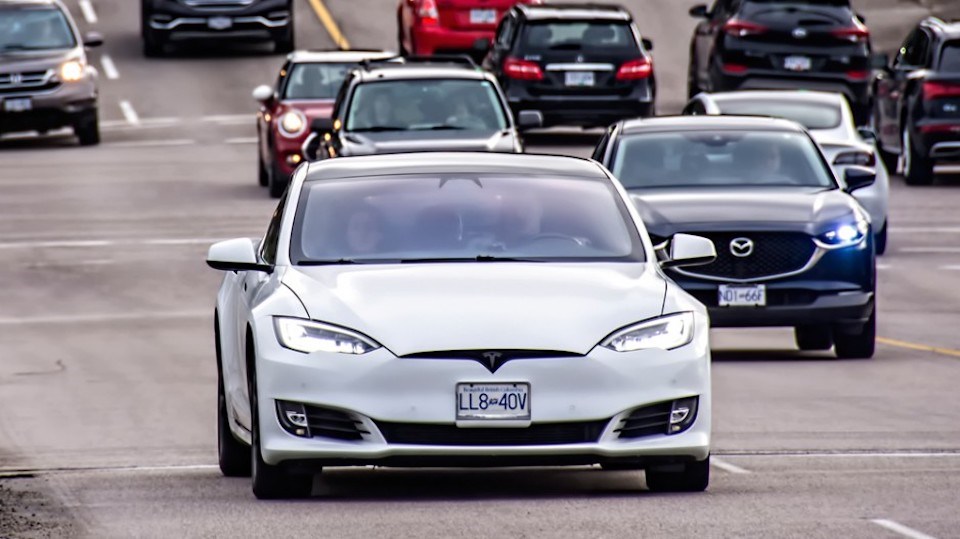One of the impending jokes of the current driving season is that the billboards advertising the price of gas will become calendars. It is now no longer difficult to imagine the numbers “2.022” next to the word “Unleaded” as British Columbians fill up their tanks.
The current state of affairs might be B.C. leading drivers to consider the purchase of an electric vehicle. Research Co. and Glacier Media have been tracking the perceptions of residents and drivers or the past few years.
In 2022, as our usual habits of commutes and trips have returned, the numbers have moved slightly.
There is a bit of growth when British Columbians are asked about specific actions. The provincial government has committed to ensure that, by 2040, all light-duty cars and trucks sold in the province will be “zero emission.” More than seven in 10 British Columbians (73 per cent, up three points since 2021) agree with this aspiration.
British Columbians aged 18 to 34 are more likely to endorse this policy goal (78 per cent) than their counterparts aged 35 to 54 (75 per cent) and aged 55 and over (69 per cent). Regionally, the notion of a “zero emission” province 18 years from now is popular in Metro Vancouver (76 per cent), the Fraser Valley (73 per cent), southern B.C. (72 per cent) and on Vancouver Island (70 per cent). The numbers drop drastically in northern B.C. (55 per cent).
The aspiration continues to be regarded as achievable by most residents. In 2019, 49 per cent of British Columbians said that exclusively selling “zero emission” light-duty cars and trucks by 2040 was achievable. In 2021, the numbers rose slightly to 51 per cent. This year, 53 per cent of the province’s residents feel the promise will be kept.
Almost three in five British Columbians who drive their own vehicle (59 per cent) claim that it is “very likely” or “moderately likely” that the next one they acquire will be electric. This represents a six-point increase since 2021. But only 36 per cent of drivers in northern B.C. are likely to ditch their current fossil-fuel-powered car for an electric vehicle. This is significantly lower than what is reported across Metro Vancouver (64 per cent), the Fraser Valley (62 per cent), southern B.C. (54 per cent) and on Vancouver Island (53 per cent).
Even with heightened awareness about electric vehicles and a high level of agreement with the provincial government’s 2040 goal, there are lingering concerns that are making residents wary of plugging in now. The main one is cost, with 59 per cent of drivers in the province saying that electric vehicles are too expensive when compared with non-electric options. There is a significant component of the population that might be dreaming “too big” when it comes to going electric or is unaware of the assistance that existing rebates could bring.
More than half of drivers (54 per cent) also cite a fear of becoming stranded if they cannot find a charging station, and a slightly smaller proportion (50 per cent) worry about not having enough places to charge the vehicle in the areas where they usually drive. As expected, these fears rise in northern B.C. (59 per cent and 54 per cent, respectively) but are also major concerns for drivers aged 55 and over (60 per cent and 57 per cent, respectively).
Another major drawback is the purported lack of adequate facilities at home. More than two in five drivers (44 per cent) say they are less likely to buy an electric vehicle if they do not have a place to charge it where they live.
Finally, the “feel” of the EV compared with a non-electric vehicle is an issue for 13 per cent of drivers in British Columbia.
The survey’s results provide hope to those who envision a future where fossil fuels are no longer as prevalent. Majorities of British Columbians believe the provincial government was right to mandate change and think it will eventually be successful. Drivers may be more convinced about buying an electric vehicle than last year, but the fears about becoming stranded persist.
A successful campaign to convert drivers will need to discuss the places where charging stations are available in specific communities. •
Mario Canseco is president of Research Co.
Results are based on an online study conducted from April 25 to April 27, 2022, among 800 adults in British Columbia. The data has been statistically weighted according to Canadian census figures for age, gender and region in British Columbia. The margin of error, which measures sample variability, is plus or minus 3.5 percentage points, 19 times out of 20.



